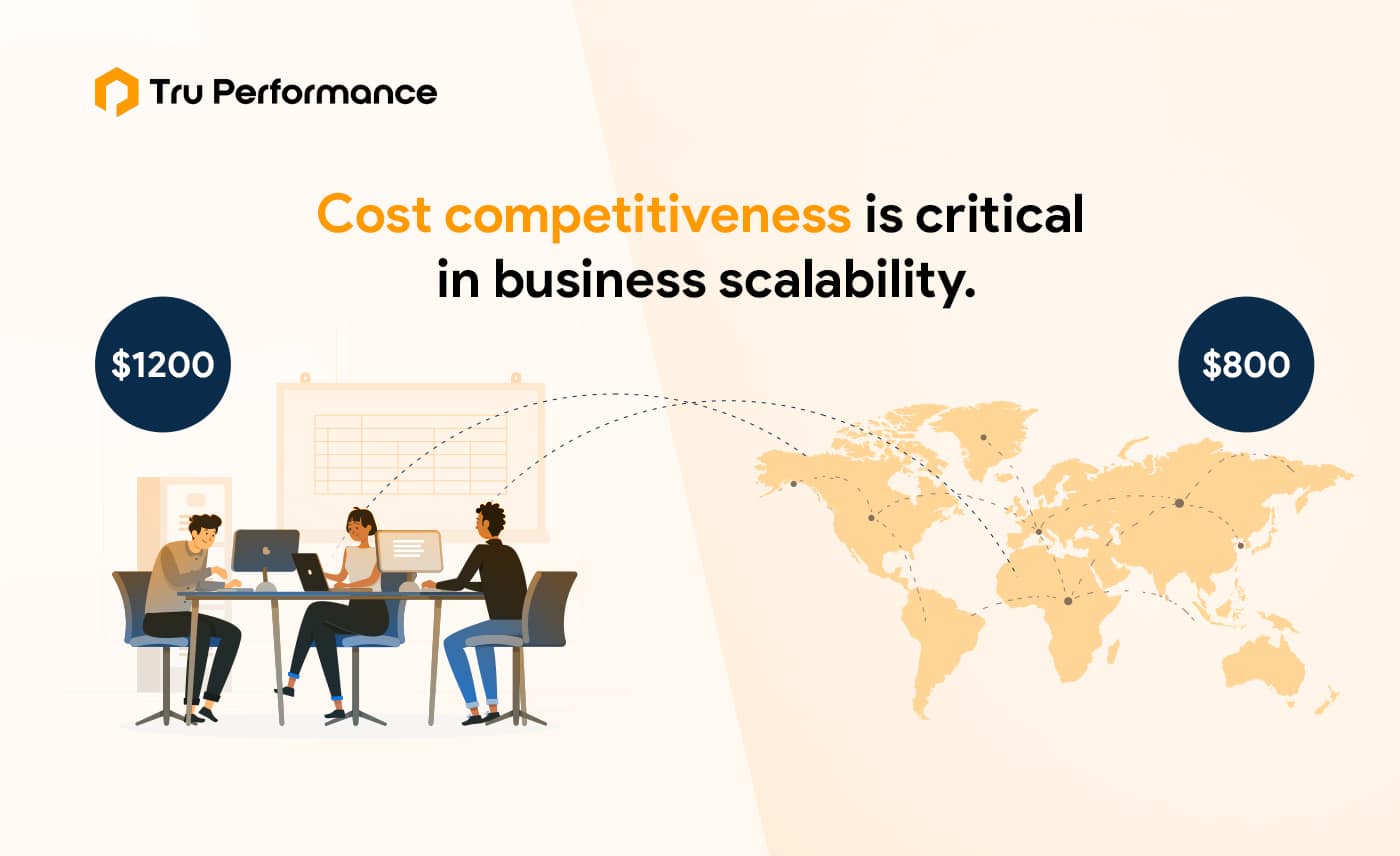Captive Vs. Third-Party Outsourcing – Which One Is Better For Your Business?
Business expansion is directly proportional to the competition amongst companies in the market.
Today, the product or services are expected to be of excellent quality and expected to be cost-competitive. Since cost competitiveness is one of the critical elements that take the company towards progress and be the reason for its failure, it is crucial to work out the best way to manage its costs and expenses.
Setting up a Captive Center or outsourcing to a Third-Party BPO, i.e., business process outsourcing or a call center, is one of the most typical mediums to run a business. But the real question is – which one is better?
The rapidly growing nature of the market tends towards a high-cost competition. Thus, companies are choosing third party outsourcing as it is cost reductive and is apt for the business. In contrast, many companies keep security and authorization under their control and decide to create their captive model. Different companies have different choices prioritizing their businesses’ needs and gains.
In this blog, we give you our verdict about which is more convenient and beneficial. To understand it better, let’s delve deeper into the workings of both the models separately.
Captive Model
The captive model comes into play when the companies decide to set-up their operations and handle the entire work itself. The functions are remotely managed, as they are not outsourced to another vendor. They conduct their subsidiary, preferably in low-cost locations. In this model, companies can choose to take charge under their authority rather than any other delegated service provider. They inspect the integrated and complete working process, like manufacturing the product and its delivery or entire customer life-cycle in case of services, etc.
However, Captive Shared Services have a drawback considering that it’s expensive compared to third-party outsourcing. Understandably, significant capital investment is needed to invest in equipment and infrastructure, for instance, the land required for the building, maintenance charges, and so on.
Third-Party Outsourcing
In contrast, third-party outsourcing is when the third-party service provider is assigned all the operations’ responsibility. It is done to reduce the cost and improve the overall efficiency of the whole organization. Suppose a company outsources its processes to a third party, depending on the industry, location, level of complexity, and various other dynamics. In that case, they can save up to 40% of their current costs.
When you delegate your operations to a BPO or a call center, you appoint them on a contractual basis. They take the entire charge to handle your customers. In third-party outsourcing, you don’t have to stress much as the burden of responsibilities is taken care of by the vendor. All that is required for a reasonable control is a robust review system.
Merits and Demerits of Captive Model Outsourcing
As mentioned earlier, some companies arrange their dedicated task force for management, which is termed Captive Model Outsourcing. But what makes the rest of the companies go for alternative third party offshore outsourcing? It’s because there are many factors associated that businesses should consider. For understanding the overall facts of captive center services, let’s take a look at its advantages and disadvantages.
Merits
- Companies have much work to deal with as it is. Choosing captive model outsourcing gives higher scalability that ultimately turns out productive owing to the low-cost workforce.
- Companies that set up their workforce have security and more authorization. They carry out close inspection of their projects.
Demerits
- It requires more effort and time to dedicate in regards to their working process. Creating a captive center is a long term process involving many aspects like land, infrastructure, equipment, maintenance for the electricity, cafeteria for the employees, and much more. These factors can be stressful, resulting in perplexing and distracting the company from its core operations area.
- Opting for a captive model makes sense only if you have enough money to invest. It’s not at all affordable for startups and small-scale companies.
- The most worrying factor about a captive unit is, they are supposed to create the whole set-up on their own, allocating the work to someone who has the least experience about the country and city that has been shortlisted. When the assigned authority goes to a country that doesn’t know the particular country’s dynamics (legal or otherwise), it makes things more challenging. Articulating the captive model is a lengthy process and creating it from scratch is a tough job to do. The other way to do it is to hire a consultant or a consulting firm to do it, resulting in higher spending.
Merits and Demerits of Third Party Outsourcing
Picking third-party outsourcing has its perks. Usually, offshore outsourcing or third party outsourcing is appointed from the countries that are not located near the home country, i.e., it is designated to other countries offering similar services. But as we should examine all the factors linked with it, let’s check out its merits and demerits.
Merits
- The most satisfying advantage for opting for third party outsourcing is its cost reduction. It contributes to cutting the cost and increasing the profits. Once you have the contract with the third party- you don’t have to worry about the physical assets, human resources, payrolls, cabin for the workers, and the overall maintenance and infrastructure.
- Since third party outsourcing is picked based on terms and conditions, they are inclined to work for the respective operation with utmost adherence and obligation. As they are paid for delivering the assigned work on time, and according to the terms and conditions, the accountability and responsibility lie with them with penalty clauses in place in case of misses.
- Again, as they are only determined for the specific tasks, they handle it with complete dedication having various technical experts and departments. A chain of employees working for a particular project is out and out productive and authentic in any manner.
- BPOs or call centers provide you a lot of flexibility. Be it their shifts, workloads, or any other process; they handle it with absolute adaptability.
- Offshore outsourcing manages all the tasks and processes for you, consequently giving you ease and more malleable so that you can involve yourself in any other possessions. Doing so seemingly gives you less stress and more growth to your company.
- Any category of the businesses can hire offshore outsourcing. Whether you are a startup, small-scale, or large, BPOs are comparatively a smart choice compared to a captive one.
Demerits
- Hiring a third party for overseeing the task tends to hand over all the controls leaving all the authority entirely to them, which can be risky if due diligence before signing the contract and regular reviews post that is not conducted. Moreover, if the third party is an authentic company with genuine references and trusted by many others, it’s the way to go.
- Another risk in involving a third party is misusing your intellectual property. These can be leaking confidential data, files, documents, or any other work. This risk can also be mitigated through due diligence and having various check mechanisms in place. With the advancement in technology and the services provided by authentic third-party BPOs, this risk, over the years, has reduced to the same levels as of a Captive Unit, if not any lesser.
Finally, what is the right choice for you?
Based on the above advantages and disadvantages of both captive and third-party outsourcing, you can choose the one which seems more beneficial to you. It depends on your business’s nature, but ideally, if you examine, third party outsourcing is a better choice for all types of companies. In contrast, the captive is better only for the large size companies. Secondly, the ROI and the company’s budget look positive if you go for third party outsourcing; after all, it is much more affordable than the captive model.
Lastly, if you want to shut down the process that requires either a captive center or third-party outsourcing, and if you have created a captive model, then terminating the process will be a massive issue for your entire business. On the other hand, if you have a contract with a third party offshore outsourcing, you can dismiss them and end the complete agreement with them. Captive needs more time, effort, and investment while the latter results in the least. [/vc_column_text][/vc_column][/vc_row]








